I first started going to Burning Man in 2013, and I went for the music. Some friends and I had been throwing themed deep and tech house parties together in New York, and they brought me into this “thing in the Nevada desert” they had done together the previous two years. I had barely seen any photos, let alone videos, of Black Rock City before they invited me on the trip, and I remember sheepishly asking them, “Is there any house music out there?” They looked at me like I was an innocent puppy, and their wry smiles followed by a “Don’t worry, there’s plenty” was enough to get me to commit. I had no idea of the depth to which Burning Man would change the way I experience and appreciate electronic music and the way I look at gatherings of humans who come together around a shared love for this kind of music.
It’s often said that Black Rock City is a space for experimentation and iteration, and that those lessons branch out and impact the world for “the other 51 weeks.” Turns out, that’s all applicable to the dance music subculture within BRC. The Burning Man experience has influenced DJs, event producers, and more to bring the communal effort, musical experimentation, and serendipity from the playa back to their year-round endeavors.
There’s been quite an evolution of the electronic music scene in Black Rock City over the last 25 years. I chatted with some of the originators of the scene and who first brought their creativity and creations to the playa between 2003-2008 (or are contributing to projects that had their start during those years) to get their perspectives and learn how Burning Man has influenced their musical and artistic journeys out in the world beyond the desert.
There are countless stories, moments, memories from bringing beats to dusty BRC — this is just one of them. We’re going to be following up with more pieces that show the diversity and depth of this aspect of Burning Man culture — DJs/producers/camp leads — in the coming months. Have a music story you want to share? Shoot it our way!
You Can’t Make this Experience Happen Alone — Syd Gris & Opulent Temple
Commercial music festivals typically have production companies that build the stages, and the host organization or promoters who program and market the lineups. That’s not how Burning Man works. There are no sponsors in Black Rock City, making it a totally different calculus. It takes a village to bring large scale sound out to the playa, with many human beings contributing countless hours of planning and prep to create something bigger than themselves, then hard physical work and tear down in a harsh environment.
Syd Gris has been leading the Opulent Temple crew and their music mission to the desert for more than 20 years. Known for their massive sound, impressive stage design, and Sacred Dance “white parties” on Wednesday nights, it may be less apparent that the Opulent Temple’s DJ lineup is largely composed of people who played a part in bringing the camp and stage to life.
“It’s the reason that we still exist — the participation of a volunteer group to spend their money, to spend their vacation time to build this thing for other people to enjoy. We have a community that believes in what we’re doing and gets enough out of the effort and large amounts of hassle involved to produce this pretty massive, cool complex production. We need every member of the crew to make Opulent Temple happen.”
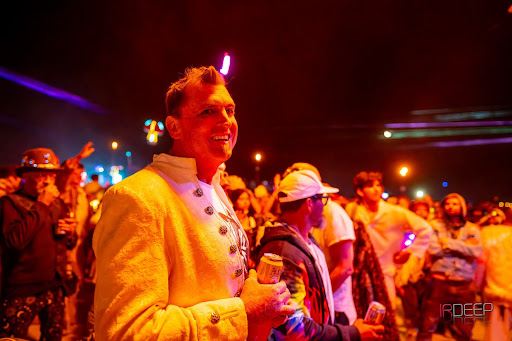
Burning Man Creates Professional Experiences… for Amateurs
For many on the Opulent Temple crew, the artistic release of playing a set at Burning Man is central to the motivation of making the camp happen year after year. From the outside, an Opulent Temple set may appear professionally executed by seasoned producers and creators. But on the ground, Opulent Temple is (and many Black Rock City sound camps are) a playground for amateur music and logistics geeks to bring their dream productions to life. In this way, even big sound camps resemble other small and large scale collective Burning Man initiatives — living a participatory ethos that welcomes all to play and create, regardless of their real-world credentials — it’s about passion, not perfection.
“The people on our team, they are mostly DJs who want their opportunity to have that amazing Burning Man moment of playing music at the best party on the planet. It is part of the deal — you volunteer your time, you do a lot of shitty things like unloading semi trucks in dust storms to build a stage — all so you can have that DJ moment. Our folks are great and talented, but they’re not professional, touring DJs. Their chance to play a set at this scale at Burning Man is to give their blood, sweat and tears to this effort. And that is definitely part of how we have had a sustainable team as well as of course, the family, the camaraderie, and the satisfaction.”
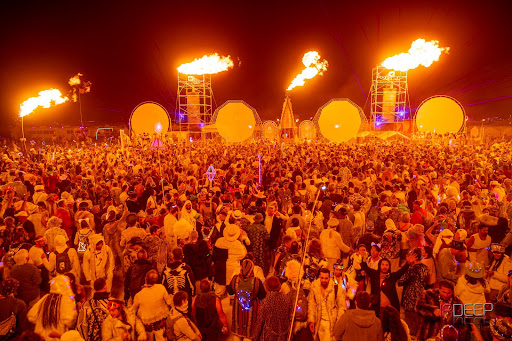
DJing in Black Rock City Allows You to Experiment and Take Risks — The Scumfrog
The open natural expanse, the extra space to dance, thousands of humans unplugged from schedules and expectations, and crowds wired for new experiences — all of these elements lend themselves to the playa being an ideal place for musical experimentation that ultimately fuels the evolution of music beyond Burning Man.
If you were on playa between 2004 and 2018, you may have heard Jesse Houk aka The Scumfrog’s sounds emanating from Opulent Temple, Pink Pussycat, the Robot Heart bus, or other sound systems. Having first arrived in Black Rock City by invitation from Syd Gris, Jesse quickly realized the music scene in Black Rock City was different. He was touring all over Europe at the time, and while his career was on a solid track, BRC’s energy shifted how he thought about his craft.
Initially starting out with crowd favorites, Jesse quickly realized he could try out some unexpected twists in his sets, that the dancefloor embraced his creativity, and that it might fundamentally change the way he approached his music artistry.
“I played probably 24 hours after I arrived [in Black Rock City]. I played exactly the set that I would’ve played a week before in Ibiza, and it went over great because it was a set that was very much like the sound of that moment and all of my new songs that had not been released. That whole part of DJ culture was very much still alive and kicking, so people appreciated that. But it wasn’t until I started exploring in the days after that, I realized I didn’t have to do that.”
“Burning Man allowed me to DJ outside of DJ culture, and it allowed me to take a lot of risks outside of what people expected from me in terms of my brand or sound. And if those risks worked, then I could take whatever worked from that experiment back into mainstream clubs and events.”
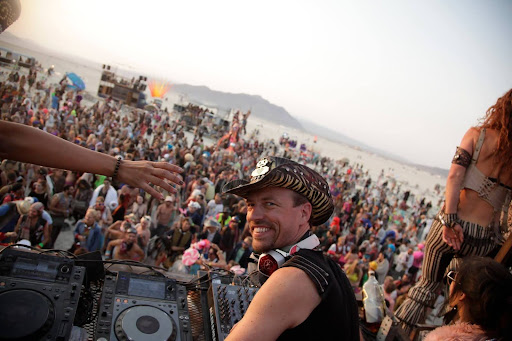
As Jesse got deeper into the evolving electronic music counterculture of Black Rock City, his experimentation deepened too.
“Through the years that I went, Burning Man was so valuable because it made me reset and reconsider what my career is about,” Jesse said. “I truly embraced a counterculture element that Burning Man provided. I could DJ and I could make people happy and dance without having to do the thing that was necessarily expected of me. I could let that all go and just do cool shit, and I really loved that.”
While Jesse hasn’t been back to Black Rock City since before the pandemic, he hopes other DJs experience Black Rock City as a place to celebrate creative experimentation.
“Don’t let the motivation be boosting bookings or social media, follow repetitive musical formulas, or seek out only the camps and cars building ever bigger sound systems,” he wisely shared.
“We want this to be an exercise in community building. We want this to be an exercise in counterculture. Burning Man is an experiment and you go with where that experiment leads you. So as an artist, I would tell other DJs that if you go to Burning Man, use it to take risks. That’s what I got out of it the most, and I had the most creative breakthroughs as a producer and a DJ from moments at Burning Man.”
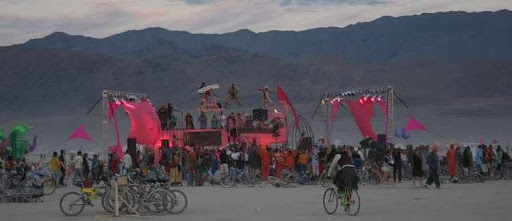
Electronic Music Builds Community — Lee Burridge
Music lovers come together in Black Rock City to enjoy sets on unbelievable sound systems with amazing people. Partying with people you love and making new friends through music is not exclusive to Burning Man, of course. But doing it in a decommodified, non-commercial environment, where people are fully present, where you often don’t even know who’s DJing, where you’re introduced to new sounds, and where people get to know you for who YOU are? That’s what builds authentic connection and community on playa, and for many in the dance music world, that translates into a more interconnected global music scene for fans and creators alike.
When Lee Burridge first landed on playa in 2005, he decided to firstly take in all Burning Man had to offer rather than making DJ’ing the reason to be there.
“I didn’t want to instantly make what I did each week in clubs a part of something I didn’t yet understand. I chose to take my first year at Burning Man just to explore and be free.”
Lee was a key contributor to the emergence of the Full Moon parties in Thailand in the early 1990’s. By his second year in Black Rock City, he was seeking music consciously created to bring forth a specific feeling that enhanced the playa’s natural surroundings. Unable to find what he was looking for, he began exploring a new sound that played an important part in the evolution of electronic music in BRC.

“Each year I was still just letting Burning Man be whatever it needed to be for me, but I would always leave the playa very, very inspired and excited on so many different levels. Both musical and other. I was gushing for about a decade to literally anybody who would listen that people had to go out there — especially to a bunch of my contemporaries in the music scene.”
The community aspect of electronic music in Black Rock City persists for Lee beyond the playa and in his day-to-day work. He runs a record label and global event series which he partially credits Burning Man for inspiring certain aesthetics and values.
“Quite a few times I’ve unwittingly built communities around music, and it was seeing the power of community out at Burning Man that reminded me of its beauty and value in the world. I continue to bring it into my events both with the family of artists I work alongside as well with those attending. I always like to wander around and talk to people rather than hide in the DJ booth. It’s always interesting to talk to people, thank them for being there and sometimes I get to hear beautiful stories from their community experiences. Music is such a beautiful way to connect and we get to experience so many different things because of it. Love, joy, happiness, escapism, connection. These are some of the things I’ve personally taken with me every time I’ve gotten off the playa.”
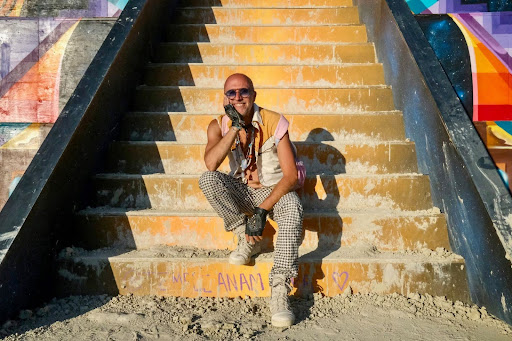
It’s Not Just a Week in the Desert, It’s a Lifestyle — Jason Swamy & Robot Heart
So many groups coalesce to bring beats to the desert, but what happens after we all go home? The connections made through music in Black Rock City have a way of continuing well beyond the dust. Sound camps and mutant vehicle teams create offshoot projects, put on events, organize their crews, and iterate on what they learned in BRC. The Burning Man electronic music community and culture is on the move, sparking gatherings, collaborations and creative spaces around the world.
Though they may be known to many as the architects of the deep playa sunrise set, the Robot Heart team’s reach has been branching out into the larger world for quite some time. They created their own multi-day event outside of Las Vegas, and threw events in New York City for many years.
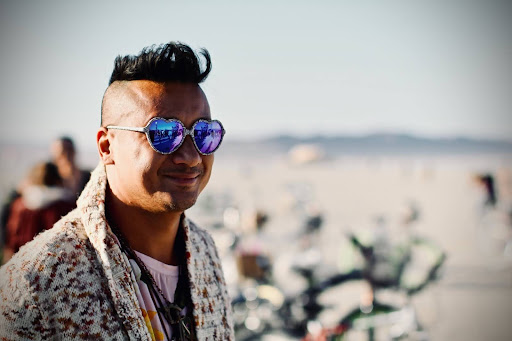
“When you take the 10 Principles back home, this becomes a year-round lifestyle, not just the few days we create together in the desert,” Jason Swamy said.
Most recently, the newly formed Robot Heart Foundation nonprofit activated The Loom makerspace in Oakland for two month-long residences that featured art, talks, community activation, children’s workshops, and yes, of course, the “oontz-oontz.”
Swamy created the sound and curatorial programming structure for Robot Heart, and serves as the Music Director. He and the team first brought the Robot Heart concept to playa from New York in 2008 (ask him sometime about how he DJ’ed for more than 40 hours over the course of his first Burn). He gives a nod to Burning Man for influencing his own work producing festivals in Thailand and Bali.
“Though I was helping curate the Robot Heart bus for many years, at this point in my career, working on other projects in other parts of the world, I help curate other curators. We’re all children and progeny of Burning Man. Robot Heart is not an electronic music camp. We are a culture camp. We are doers and dreamers. We are constantly creating and evolving what Robot Heart is to become around the world, but it was born at Burning Man.”
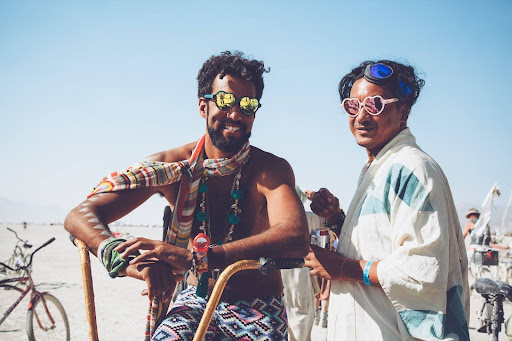
Preserving Serendipity Makes Experiences Magical — Benji Alexander & Robot Heart
You know that feeling when you’re cruising around BRC and you run into the exact thing you didn’t know you were looking for? Or when someone says the one thing you needed to hear? Or when that DJ plays the perfect track for a collective moment? That, my friends, is playa serendipity. It’s core to Burning Man, and it’s core to the musical tastemakers and organizers that make it happen. It’s more than a vibe — it’s an ethos that informs the way camps operate, how DJs create, and how community evolves on playa and out into the world.
Benjamin “Benji” Alexander has been camping and DJ’ing with Robot Heart since 2011. Over the last five years, he has led the team that curates the musical experience of the bus on playa.
“We don’t have radios in camp, on purpose. We don’t walk the bus out with team uniforms on. We are very, very shooting-from-the-hip and wanting to make sure that it’s still fun for us. We don’t want this to turn into running a festival stage. For the last five years I’ve been the main guy that’s running DJ programming, and my way of thinking about that is if a DJ misses their set, it is what it is. The DJ before can play longer, the DJ after can begin sooner, or there’ll be some other DJ around. We’re still really holding onto that rugged aspect of Burning Man.”

Benji led the musical curation of Robot Heart’s recent Oakland residencies. A large part of the design and flow of that urban experience was guided by lessons and experiences from Black Rock City. He says it’s all about serendipity.
“The thing that we, even as people who bring music to Burning Man, love so much is the serendipity. One of the major differences between Burning Man and pretty much every other large event is that as soon as you step out of the kind of designated zones for music [at other large-scale events], there’s often nothing going on other than people sleeping. Whereas the thing that’s so incredible [in BRC] is the random awesomeness of just walking or riding through any part of the city and finding someone that’s just set up something for you to experience that is going to be awesome. We really want to hold onto that.”
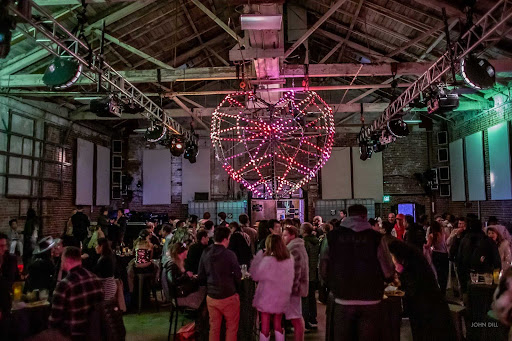
Burning Man’s electronic music scene offers far more than a week of sound in the desert — it’s a blueprint for how creativity, collaboration, and courage can reshape our everyday lives. From the dusty dance floors of Black Rock City to living rooms, warehouses, conference tables, and remote gatherings around the globe, the lessons are clear: no one does it alone; experimentation fuels growth; and shared rhythms build authentic connection and community. When we carry the ethos of Radical Inclusion, improvisation, and intentional serendipity beyond the playa, we help cultivate a world where music isn’t just heard — it’s lived.
Want to dive into more BRC music history and culture? Check out these additional stories on the Burning Man Journal and Burning Man LIVE podcasts episodes:
Cover image design by Martin Rodriguez


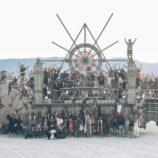
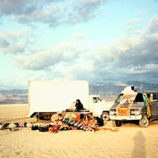
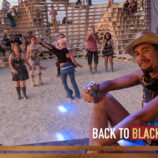
How was this article written with not one mention of Desert Dwellers? They literally created the desert sound that is synonymous with the burn.
Report comment
Comments are closed.